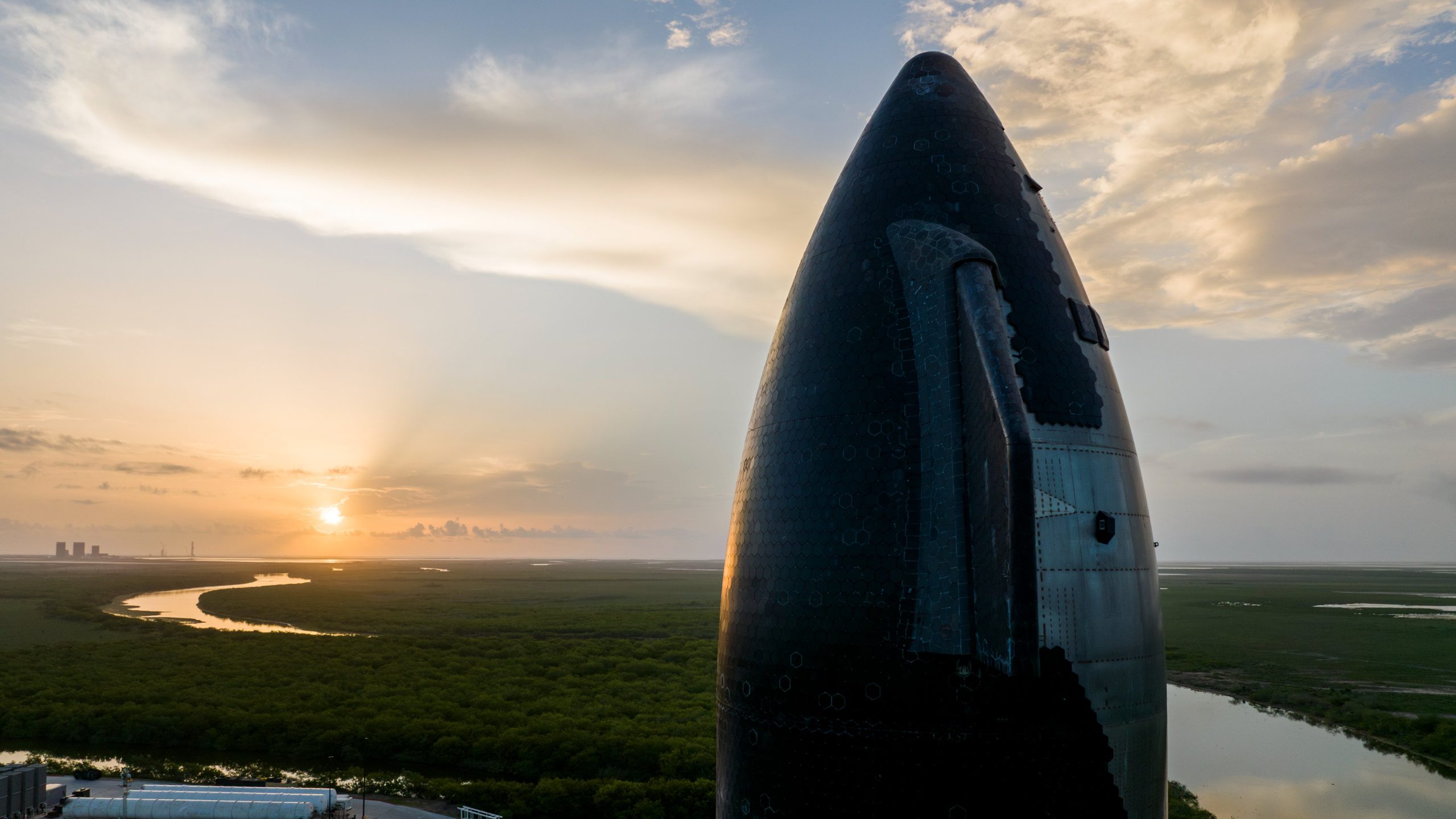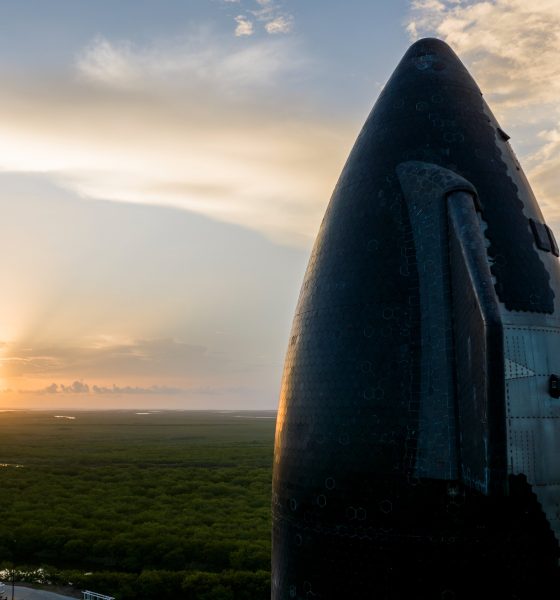U.S. Representative Kevin Kiley (R-CA) has sent a letter to FAA Administrator Michael Whitaker over his recent claims about SpaceX. During Tuesday’s Transportation Committee hearing, Whitaker advanced several alleged safety concerns about SpaceX’s operations, all of which were strongly denied by the private space company.
During his testimony, the FAA Administrator alleged that SpaceX must operate at the highest level of safety, which includes having a safety management system program and a whistleblower program. He also alleged that SpaceX had launched without a permit last year in Cape Canaveral, FL and that the delay in Starship’s Flight 5 launch was due to SpaceX failing to provide an updated sonic boom analysis, among other safety concerns.
FAA Administrator Whitaker made several incorrect statements today regarding SpaceX. In fact, every statement he made was incorrect.
It is deeply concerning that the Administrator does not appear to have accurate information immediately available to him with respect to SpaceX… pic.twitter.com/OrtMUvnCNI— SpaceX (@SpaceX) September 24, 2024
SpaceX strongly denied each of Whitaker’s claims. In a letter, Mat Dunn, senior director of global government affairs at SpaceX, stated that “every statement (the FAA Administrator) made was incorrect.” Dunn also argued that SpaceX is currently the “safest, most reliable launch provider in the world, and is absolutely committed to safety in all operations.”
Kiley’s recent letter to Whitaker carried some of the points from SpaceX’s rebuttal of the FAA Administrator’s claims. As per the Representative, Whitaker must provide answers to a number of questions surrounding his claims during the Transportation Committee hearing.
FAA Administrator Whitaker made a number of false statements in his testimony about @SpaceX. Either he doesn’t know what’s going on at his agency or he deliberately deceived Congress.
I’ve asked him which it is. Either possibility calls into doubt his fitness to lead the FAA. pic.twitter.com/lW2KcOnItT— Rep. Kevin Kiley (@RepKiley) September 25, 2024
Following is U.S. Representative Kevin Kiley’s letter to FAA Administrator Michael Whitaker.
September 25, 2024
Michael Whitaker
800 Independence Avenue, SW
Administrator
Federal Aviation Administration
Washington, DC 20591
Dear Administrator Whitaker,
On September 24, 2024, you testified at a hearing of the Aviation Subcommittee of the House Transportation and Infrastructure Committee. I asked you several questions during that hearing regarding the FAA’s decisions with respect to SpaceX launches. Your answers appear to be filled with inaccurate statements. Such falsehoods raise serious concerns about your fitness to lead the FAA. Please provide my office with responses in writing to the following questions –
- You claimed that SpaceX launched recent Falcon missions without a permit. SpaceX has said these claims are completely false, and that the FAA has not alleged previously that the company was not permitted or licensed to launch these missions. Can you share the evidence for your claim that SpaceX launched these missions without a permit?
- You claimed that SpaceX moved a fuel farm closer to the population without completing a risk analysis statement. SpaceX says that the new location was twice the distance from the nearest publicly accessible area, that the company provided the FAA with all the required analysis, and that the FAA ultimately approved the revised location. Please supply all correspondence between the FAA and SpaceX relative to the fuel farm.
- You claimed that SpaceX failed to provide an updated sonic boom analysis. SpaceX refutes this and says that the Fish and Wildlife Service had already reviewed Starship’s sonic booms and determined they had no environmental impact. While SpaceX has acknowledged it recently provided the FAA data showing a slightly larger sonic boom area than originally anticipated, the company maintains this results in no new environmental impact.
- What evidence does the FAA have of a new environmental impact?
- How long will it take the FAA to make this minor paperwork update?
- What evidence does the FAA have for your assertion that this is a safety related incident”?
- You claimed that SpaceX was in violation of Texas state law. What Texas laws did SpaceX violate?
- Does the FAA need to be reformed to keep up with innovation in the commercial space industry?
From the dawn of the space age, America has set the standard in exploration. Our nation’s spirit of innovation has propelled us to the moon and pushed the boundaries of what’s possible. If we want to keep that legacy alive, we must work with innovators, rather than slow them down. We cannot hinder private industry that is pushing the limits, with regulatory red tape and constant delays. The longer we stall, the more ground we lose. We must continue to empower our private space companies to innovate, build, and lead. This is the only way that we can ensure our national security, while also guaranteeing that America defines the next generation of space exploration. I look forward to your response.
Sincerely,
Kevin Kiley
Member of Congress
Don’t hesitate to contact us with news tips. Just send a message to simon@teslarati.com to give us a heads up.

News
Tesla starts showing how FSD will change lives in Europe
Local officials tested the system on narrow country roads and were impressed by FSD’s smooth, human-like driving, with some calling the service a game-changer for everyday life in areas that are far from urban centers.

Tesla has launched Europe’s first public shuttle service using Full Self-Driving (Supervised) in the rural Eifelkreis Bitburg-Prüm region of Germany, demonstrating how the technology can restore independence and mobility for people who struggle with limited transport options.
Local officials tested the system on narrow country roads and were impressed by FSD’s smooth, human-like driving, with some calling the service a game-changer for everyday life in areas that are far from urban centers.
Officials see real impact on rural residents
Arzfeld Mayor Johannes Kuhl and District Administrator Andreas Kruppert personally tested the Tesla shuttle service. This allowed them to see just how well FSD navigated winding lanes and rural roads confidently. Kruppert said, “Autonomous driving sounds like science fiction to many, but we simply see here that it works totally well in rural regions too.” Kuhl, for his part, also noted that FSD “feels like a very experienced driver.”
The pilot complements the area’s “Citizen Bus” program, which provides on-demand rides for elderly residents who can no longer drive themselves. Tesla Europe shared a video of a demonstration of the service, highlighting how FSD gives people their freedom back, even in places where public transport is not as prevalent.
What the Ministry for Economic Affairs and Transport says
Rhineland-Palatinate’s Minister Daniela Schmitt supported the project, praising the collaboration that made this “first of its kind in Europe” possible. As per the ministry, the rural rollout for the service shows FSD’s potential beyond major cities, and it delivers tangible benefits like grocery runs, doctor visits, and social connections for isolated residents.
“Reliable and flexible mobility is especially vital in rural areas. With the launch of a shuttle service using self-driving vehicles (FSD supervised) by Tesla in the Eifelkreis Bitburg-Prüm, an innovative pilot project is now getting underway that complements local community bus services. It is the first project of its kind in Europe.
“The result is a real gain for rural mobility: greater accessibility, more flexibility and tangible benefits for everyday life. A strong signal for innovation, cooperation and future-oriented mobility beyond urban centers,” the ministry wrote in a LinkedIn post.
News
Tesla China quietly posts Robotaxi-related job listing
Tesla China is currently seeking a Low Voltage Electrical Engineer to work on circuit board design for the company’s autonomous vehicles.

Tesla has posted a new job listing in Shanghai explicitly tied to its Robotaxi program, fueling speculation that the company is preparing to launch its dedicated autonomous ride-hailing service in China.
As noted in the listing, Tesla China is currently seeking a Low Voltage Electrical Engineer to work on circuit board design for the company’s autonomous vehicles.
Robotaxi-specific role
The listing, which was shared on social media platform X by industry watcher @tslaming, suggested that Tesla China is looking to fill the role urgently. The job listing itself specifically mentions that the person hired for the role will be working on the Low Voltage Hardware team, which would design the circuit boards that would serve as the nervous system of the Robotaxi.
Key tasks for the role, as indicated in the job listing, include collaboration with PCB layout, firmware, mechanical, program management, and validation teams, among other responsibilities. The role is based in Shanghai.
China Robotaxi launch
China represents a massive potential market for robotaxis, with its dense urban centers and supportive policies in select cities. Tesla has limited permission to roll out FSD in the country, though despite this, its vehicles have been hailed as among the best in the market when it comes to autonomous features. So far, at least, it appears that China supports Tesla’s FSD and Robotaxi rollout.
This was hinted at in November, when Tesla brought the Cybercab to the 8th China International Import Expo (CIIE) in Shanghai, marking the first time that the autonomous two-seater was brought to the Asia-Pacific region. The vehicle, despite not having a release date in China, received a significant amount of interest among the event’s attendees.
Elon Musk
Elon Musk and Tesla AI Director share insights after empty driver seat Robotaxi rides
The executives’ unoccupied tests hint at the rapid progress of Tesla’s unsupervised Robotaxi efforts.

Tesla CEO Elon Musk and AI Director Ashok Elluswamy celebrated Christmas Eve by sharing personal experiences with Robotaxi vehicles that had no safety monitor or occupant in the driver’s seat. Musk described the system’s “perfect driving” around Austin, while Elluswamy posted video from the back seat, calling it “an amazing experience.”
The executives’ unoccupied tests hint at the rapid progress of Tesla’s unsupervised Robotaxi efforts.
Elon and Ashok’s firsthand Robotaxi insights
Prior to Musk and the Tesla AI Director’s posts, sightings of unmanned Teslas navigating public roads were widely shared on social media. One such vehicle was spotted in Austin, Texas, which Elon Musk acknowleged by stating that “Testing is underway with no occupants in the car.”
Based on his Christmas Eve post, Musk seemed to have tested an unmanned Tesla himself. “A Tesla with no safety monitor in the car and me sitting in the passenger seat took me all around Austin on Sunday with perfect driving,” Musk wrote in his post.
Elluswamy responded with a 2-minute video showing himself in the rear of an unmanned Tesla. The video featured the vehicle’s empty front seats, as well as its smooth handling through real-world traffic. He captioned his video with the words, “It’s an amazing experience!”
Towards Unsupervised operations
During an xAI Hackathon earlier this month, Elon Musk mentioned that Tesla owed be removing Safety Monitors from its Robotaxis in Austin in just three weeks. “Unsupervised is pretty much solved at this point. So there will be Tesla Robotaxis operating in Austin with no one in them. Not even anyone in the passenger seat in about three weeks,” he said. Musk echoed similar estimates at the 2025 Annual Shareholder Meeting and the Q3 2025 earnings call.
Considering the insights that were posted Musk and Elluswamy, it does appear that Tesla is working hard towards operating its Robotaxis with no safety monitors. This is quite impressive considering that the service was launched just earlier this year.










